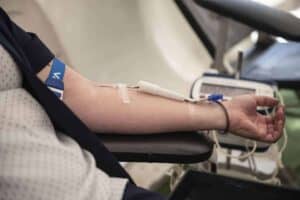The installation of an advanced SGRT system represents a major advancement in cancer care for the Cape region.

Oncology in the Western Cape is advancing significantly with the introduction of the province’s first Align RT advanced markerless patient tracking system for radiation therapy. This development marks a crucial step forward for private-sector Surface Guided Radiation Therapy (SGRT) in the region.
“With growing international support for SGRT in the treatment of breast cancer, brain tumours, head and neck cancers, sarcomas, and other conditions, the recent installation of this advanced system at Netcare N1 City Hospital’s radiation unit represents a major advancement in cancer care for the Cape region,” says Dr Cindy Aitton, head of Netcare Cancer Care.
Dr John Sauer, a radiation oncologist at Netcare N1 City Hospital, highlights the enhanced precision and safety offered by the new system. “The Align RT uses fixed cameras in the treatment room to track the patient’s skin surface in three dimensions, both for setup and motion management during radiotherapy. This ensures precise positioning and monitoring, directing radiation beams exactly where needed and minimizing exposure to surrounding healthy tissue,” he explains.
The system continuously monitors thousands of points on the skin’s surface, detecting any small shifts in position during treatment. If a patient moves during radiation therapy, the system automatically pauses the radiation beam to prevent accidental exposure. This technology ensures submillimeter accuracy, protecting healthy tissue and critical structures.
Precision in breast cancer treatment enhanced
The Align RT system is particularly suited for delivering Deep Inspiration Breath Hold (DIBH) treatment for breast cancer, ensuring submillimeter precision to minimize radiation exposure to the heart and lungs. It also enhances treatment times for other advanced therapies offered at Netcare N1 City Hospital, including stereotactic body radiotherapy (SBRT), which delivers high doses of radiation from various angles to target a lesion.
“In left breast cancer treatment, the DIBH technique requires patients to take a deep breath and hold it for a few seconds, guided by radiation therapists. This moves the heart away from the treatment area, minimizing radiation exposure,” Dr Sauer explains.
Treatment only lasts up to ten minutes
DIBH breast cancer patient Ingrid Williams is one of the first patients in the Western Cape to be treated with this new patient tracking system at Netcare N1 City Hospital’s radiation unit. She is currently undergoing specialised radiation therapy following surgery to remove a tumour in her left breast.
“With the help of this new SGRT system, the treatment aims to eliminate any remaining cancer cells around the surgical site, which is close to her heart, requiring great precision,” says Dr Sauer.
Williams shares her experience, noting that her treatment sessions last only up to ten minutes, allowing her to fit them into her lunch break.
“The treatment team is very friendly. They taught me the breathing technique, ensuring I didn’t arch my back. When I breathe in, I can see on the indicator screen when I’m in the correct position. Only then does the radiation beam start, and I hold my breath for 30 seconds, which goes by quickly. Then the radiation therapists tell me over a speaker when I can relax and breathe normally again,” Williams says.
New tech cuts radiation therapy setup time by 22%
Timesaving and markerless Marilyn Lameyer, Netcare’s regional radiation therapy manager, explains that positioning the patient for the prescribed dose of radiation typically takes significant time during sessions.
“The convenience of this technology significantly reduces setup time. It also manages motion during treatment. This results in approximately 22% reduction in setup and treatment time, while ensuring real-time precision according to the radiation treatment plan.
“The new system also eliminates the need for excessive daily X-ray imaging to verify skin marks. This allows patients to spend less time in the treatment bed. Additionally, it is a completely non-invasive, contactless technology,” Lameyer says.
Medical tattoos are no longer needed
Another benefit is that medical tattoos are no longer required to provide reference points for treatment. Treatments that previously required an enclosed mask can now be administered with an open-face mask for greater patient comfort.
“These rapid advancements in treatment technologies are not only crucial for improving outcomes. It also for enhancing quality of life, making the practical aspects of cancer treatment easier for patients,” Dr Aitton concludes.
NOW READ: Breast cancer: Early detection is vital so check yourself regularly






